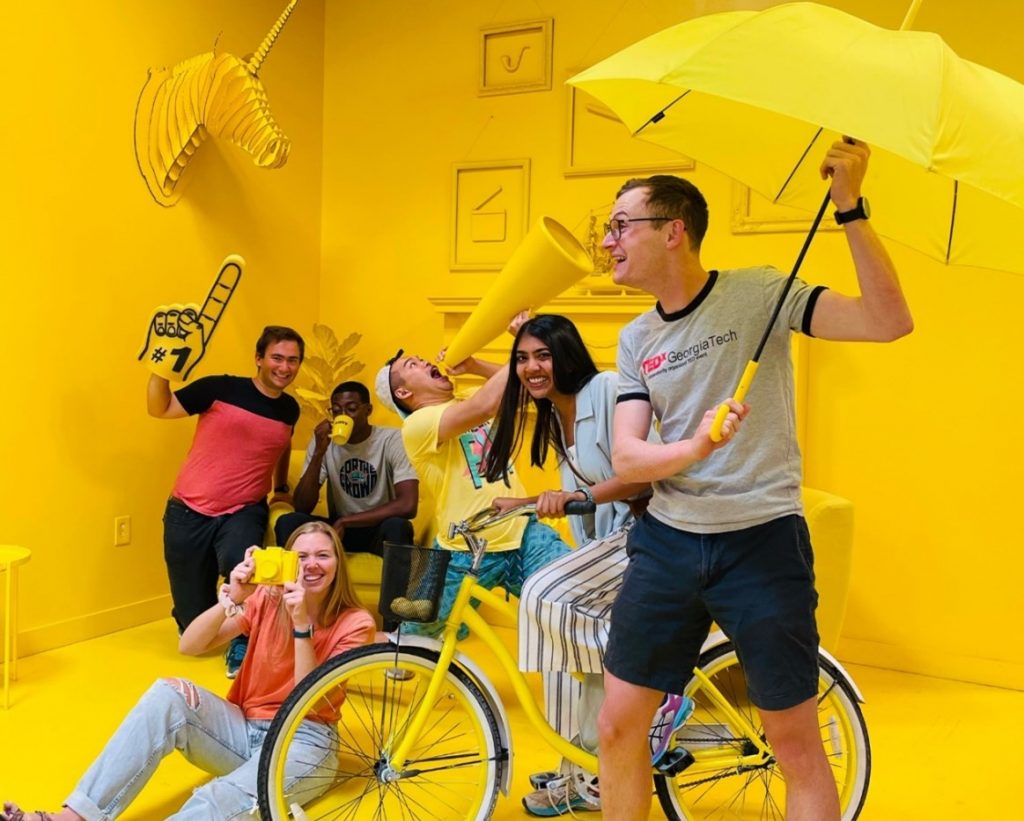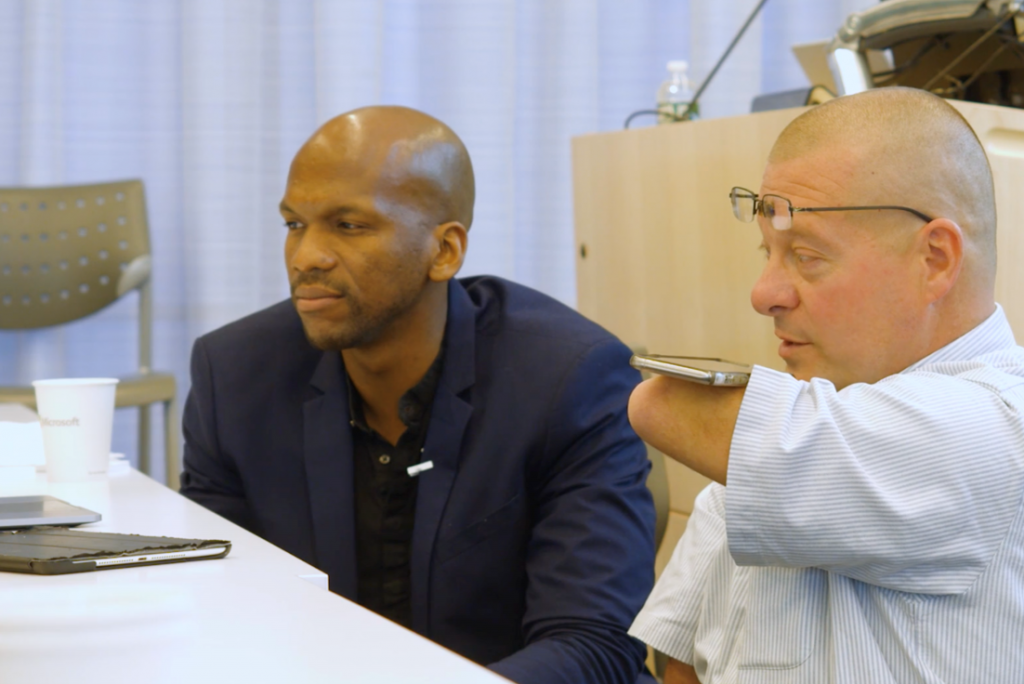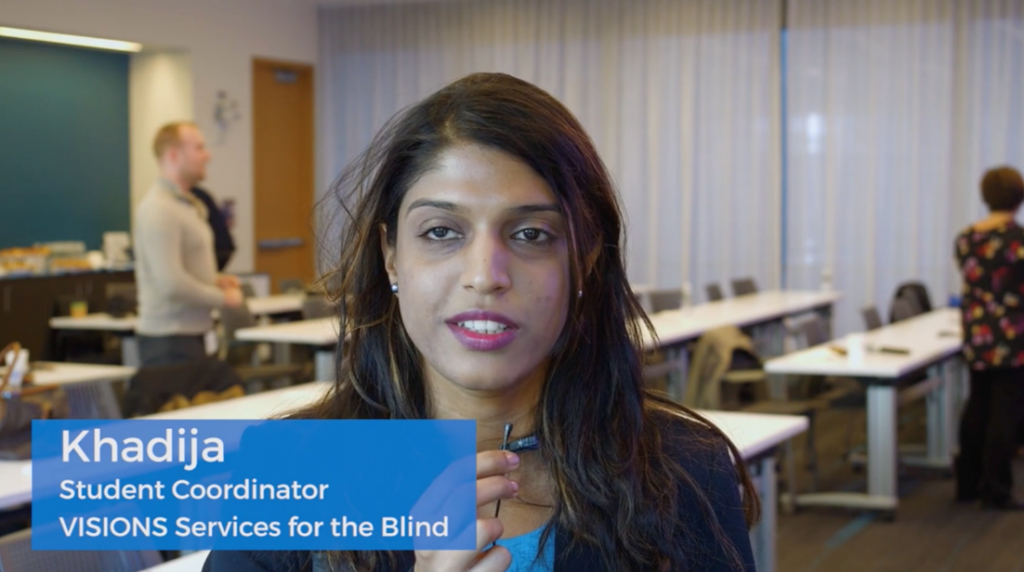The post How AI is being used to improve disability employment appeared first on Microsoft Accessibility Blog
Sammy was diagnosed with Autism at a young age. I first met him through his Microsoft internship application and followed him on his path to becoming a full-time employee. Sammy is not his real name, but his experience is very real. Like many people with a disability, he has felt excluded from society at times, first at school when he wanted to help fellow students with autism, but the administration discouraged him from doing so because of his disability. As he grew up, he worried these imposed limitations would carry over into employment, so he learned to mask his disability to avoid the stigma he might encounter in job interviews.
His experience, unfortunately, is not unique. In the age of “The Great Reshuffle” companies are vying for talent, and people with disabilities are an untapped talent pool to bridge the gap. Globally, however, the unemployment rate for people with disabilities is more than double that of people without. So, what is going on and how can technology play a role?
When sourcing for candidates, recruiters have a variety of tools to choose from, including automated screening tools. Sammy encountered bias from people in his education experience and employment search with various companies, so could the use of artificial intelligence (AI) correct that bias or will machine learning also filter out highly qualified candidates with disabilities like Sammy? The Inclusive Design Research Center at OCAD University (IDRC) is searching for that answer. It is estimated that over 50 percent of companies will deploy some form of AI-assisted or AI-automated hiring tools in the next decade. These tools use past hiring data to filter applicants by optimizing the characteristics of previous successes, but does that approach help build a diverse and inclusive workforce?
Earlier research, focused on race, origin, and gender as elements of diversity, shows that data exploration, if diverse data sets are included in AI-powered tools, can increase diversity without compromising hiring success. IDRC’s project, Optimizing Diversity with Disability, will extend this research to disability, to ensure AI screening tools do not amplify, accelerate, or automate past discrimination against disability. A synthetic data set will be created by working with applicants with disabilities in order to determine sources of bias against disability in hiring systems. Azure tools will be used to chart alternative algorithms that address bias against human differences associated with disability. In addition to data exploration algorithms, the team will investigate the applicability of the Lawnmower of Justice. This removes the advantage of being similar to everyone else by allowing no more than a certain number of repeats of data elements when training a machine learning model. IDRC knows there are many angles to approaching the use of AI in disability employment scenarios, and their inclusive team is excited to learn what insights they can highlight from this important research effort.
Having spent 11 years in various recruitment functions, I have learned not every recruitment process works for every candidate. At Microsoft, as an example, we built the Neurodiversity Hiring Program, to empower individuals who are Neurodiverse to demonstrate their strengths and qualifications during the interview process. Because this program was not available when I first met Sammy, he and I worked together to understand what accommodations would be the most effective for him.
As we think about expertise and resources, there are a collection of innovators that are working to fill the gaps.
One example is Mentra. Its co-founder, Jhillika Kumar, was inspired to found the company with the goal to create a more inclusive world for her autistic brother, Vikram. Today, Mentra’s team of disability advocates are on a mission to build a future that accepts and respects every human regardless of their gender, race, or cognitive ability. Through research in partnership with the autistic community and the Autism Self Advocacy Network in Atlanta, the Mentra team gained insight into the ‘invisible barriers’ that surface in job searching. Mentra’s goal is to address bias in AI to create the world’s most inclusive recruiting platform for the neurodiverse community. Their hypothesis is that bias in today’s recruiting industry does not start with the recruiter; it starts with the datasets that feed the matching algorithms. In order to to create a fairer hiring process, Mentra believes algorithms must be centered around diversity, equity, and inclusion.
As one of their candidates shares:
“Mentra see and understand a problem in the autistic community and want to activate the potential of every neurodiverse individual struggling to find their place in the working world. Mentra made me feel hopeful that more autistic individuals such as myself could be empowered in a unique and innovative way.”
A pivotal step in every employment journey involves a jobseeker learning about the requirements of a potential job to assess their own interest and qualifications. Interfaces for job boards work in some situations, but what if there was a better way for candidates to learn about a position?
Zammo.ai’s founder and CEO, Alex Farr, is encouraged that customers like Seattle Airport and OurAbility are using Zammo to make information more accessible. Now, he is eager to scale that success by enabling any company with a job board and make it easy for any person with a disability to use their voice to discover and apply for jobs.
On Zammo’s journey to apply AI in accessibility scenarios, they met Khadija Bari, a student coordinator at VISIONS Services for the Blind. She opened a whole new avenue of thought with a powerful question: “I’m visually impaired. With [Zammo’s] voice platform now, I just need to talk to my home assistant, and I can get the information I need to help the participants that I serve. We do it with so many other products, why not start doing it with jobs?”
That question led Zammo to explore how their solution could benefit the recruitment industry. Zammo’s intention is to learn from their previous insights, research and ultimately to produce accessible interfaces for various online job boards, enabling people with disabilities to get informational details about positions, align their skills, and complete an application easily. This project will leverage Natural Language Processing and Voice to create an interface that will give customers the ability to browse semi-structured data on various job search websites. Zammo’s platform combines Azure Bot Service, Azure Communication Service, Azure Cognitive Search, and leveraging newly released Azure Semantic Search to provide better search results given its understanding of the linguistic content of search terms.
To ensure their end solution addresses the real need of people with disabilities, Zammo is partnering with Open Inclusion, an inclusive insight, design and innovation consultancy. They help organizations unlock value by asking, understanding, and considering the needs of people who move, sense, think or feel differently. Zammo’s project matches Open Inclusion’s purpose – making the world more inclusive and leveraging technology to solve current needs by reducing frictions in new ways.
These projects from the Inclusive Design Research Center (IDRC), Mentra, and Zammo have been awarded grants by Microsoft’s AI for Accessibility a program, aimed at harnessing the power of AI to amplify human capability for the more than one billion people around the world with disabilities. The IDRC also received a joint grant in partnership with the Kessler Foundation, who since 2000, has invested more than $50 million to improve job skills and salaried employment for thousands of individuals with disabilities.
In addition to our grantees, LinkedIn continues to make their platform more accessible and usable by adding reflow and contrast features. Reflow is the process of fitting content to the width of a screen so that all content remains within set boundaries when customers zoom in to enlarge content or use smaller screens, like a phone or tablet. The Dark Mode option is also being rolled out, which features color and contrast elements that help reduce eye strain, account for light sensitivities and provide better text legibility. They also recently launched LinkedIn learning courses for employers such as Supporting Workers with Disabilities, and Hiring and Supporting Neurodiversity in the Workplace.
In addition to hiring diverse talent, companies also need to ensure they have onboarding practices to promote inclusion and workplace accommodations.
The hybrid working environment can be beneficial to people with disabilities: from reducing reliance on transportation, to the convenience of specialized equipment, to digital content access. As our grantees reimagine the future of the hiring experience through technology, Sammy reminds us that disability representation goes beyond the devices we use. He encourages candidates to: “Disclose what you feel comfortable with, but also explain to the other party what sort of accommodations would be of benefit to you. By being open about the requirements you need to make your experience enjoyable will not only make your experience better and less stressful, but it will let you understand whether the company you’re applying to will help you whilst on the job, too.”
The search for talent
The search for jobs

The search for ease-of-use


Innovations in employment tools
The story only begins with the job search




